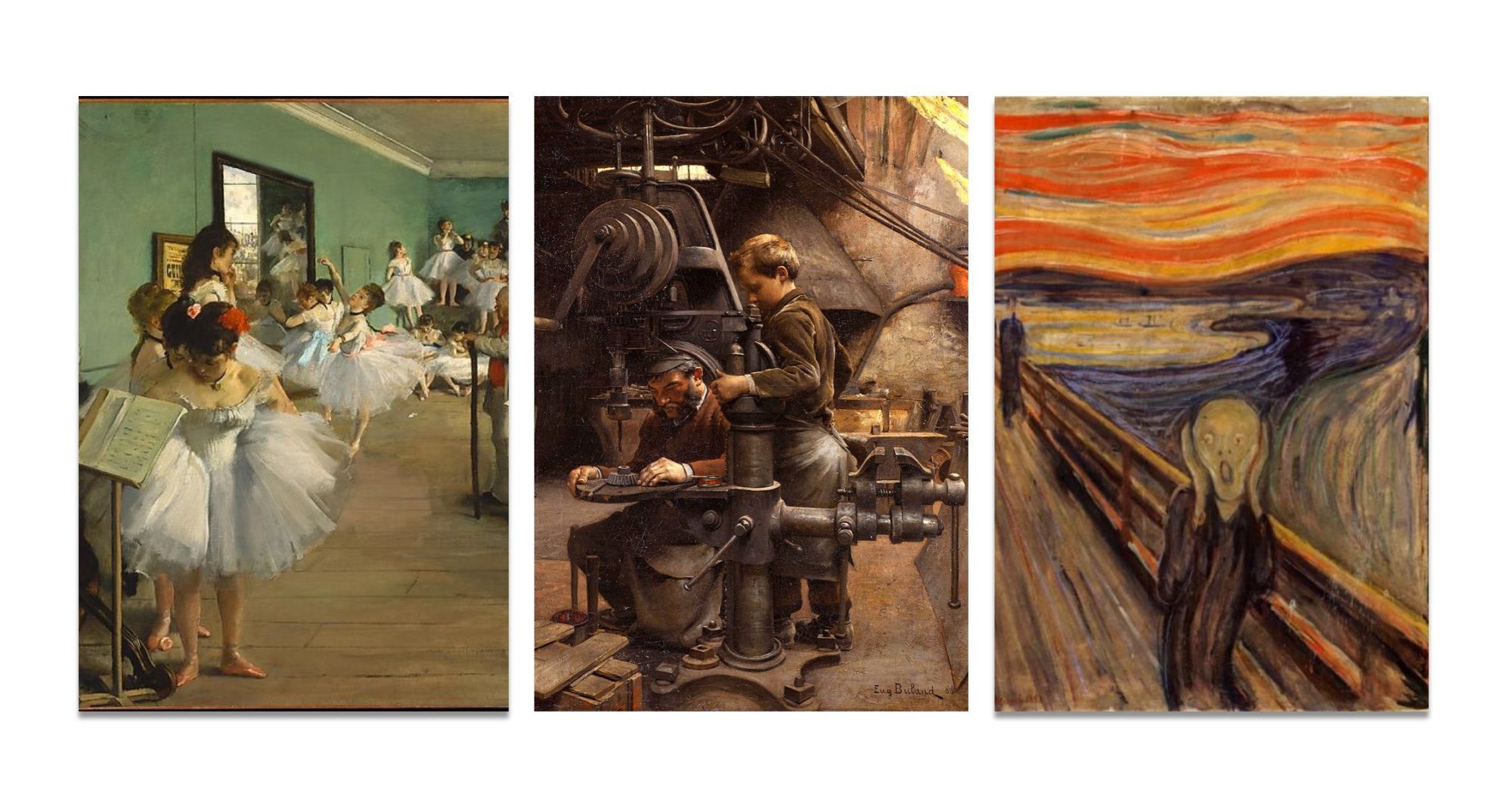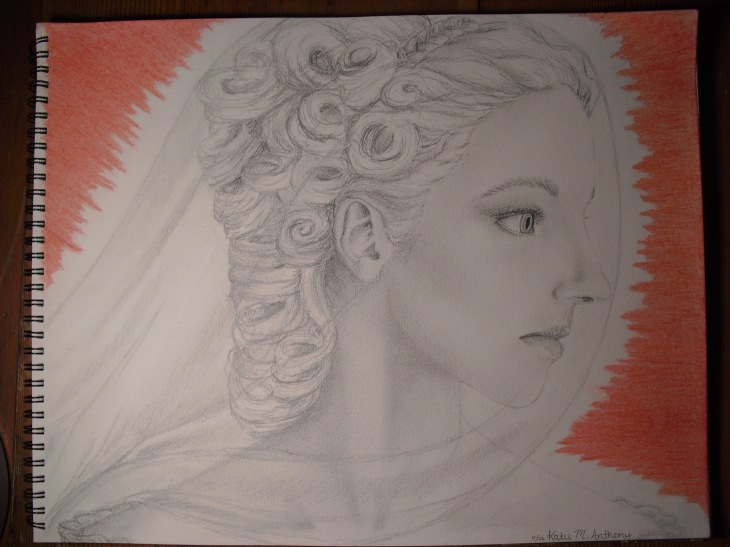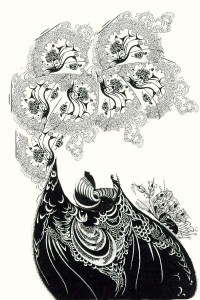Eliza Lynn Linton, the author of Modern Women and what is Said of Them and the passage within, The Girl of the Period had wise insight into the nature of two different kinds of women. The “fair young English girl (Linton, 26)” and the “girl of the period (Linton, 26)” are these two kinds of women. Linton portrays their characters in the words she used to describe them. In essence the “Fair young English girl” is “essentially womanly (33).” And the essence of the “Girl of the Period” is a cheap imitation of a demimonde (28). It is the contrast of moral richness and moral poverty.
Three binaries are evident in this article that contrasts the two kinds of women. There is the binary of impurity verses modesty, the binary of genuineness verses adulteration and finally the binary of Friend of men verses Foe of men.
The fair young English girl is the essence of purity in that she is “sweet, simple, restful (26) and retiring (29)”. She possesses “pretty bashful modesties and tender little ways” (32). Words like bashful, pretty and tender allude to a profound innocence possessed by this woman. The diction choice shows us that this woman is the epitome of female purity because “she is what God and nature made her to be (26).”
In contrast, the girl of the period is described as “fast and flourishing (22).” She “sacrifices decency and cleanliness (26)” in order to pursue her own “pleasure (28).” She is said to “envy of the demimonde. ” She envies the perceived high life of the prostitute with little regard for the cost. While she remains “indifferent to the sins” “she never stops to reflect (29)” on how her actions will affect her. Words such as indifference reflect and envy suggests a state of childish flippancy.
This woman “does away with moral muffishness” and “raises her [skirt] midway to her knee (27)” to show as much skin a possible without soliciting herself as an actual prostitute. She has lost her “purity of taste and delicacy of perception (28)” that is valued in women. Her main sin is that she “she acts against nature (32)” in the way she lives.
The fair young English girl is characterized as being a “genuine girl (32).” Her hair is “brown (26)” and this indicates that she has not altered her natural womanly state. The fair young English girl does not artificially change her appearance to attract attention. She is modest.
On the other hand, the girl of the period is in the business of alterations and adulterations of the natural self. She “paints her face (26),” and she “dries, frizzes, sticks out her [hair] (27).” This kind of woman modifies herself in order to attract attention, from shallow men and negative attention from decent people. The girl of the period not only adulterates herself but she is an “imitator (32).” In her lack of purity she envy’s the demimonde so much that she begins to copy the fallen woman and become a “prototype (28)” of a prostitute even though she does not actually sell her body. Because is only an imitator she is viewed by others as holding a distasteful middle ground. She is “a poor copy of the real thing (32).” She dresses, behaves and talks like a demimonde but never actually sells anything. Her worth therefore decreases in the eyes of those in the period because she lacks the virtue of the fair young English girl and the sexual promise of the demimonde.
The Fair young English girl is a friend of men and of family. She is a not “masculine of mind,” nor does she “rival” her husband in any way. Rather she is a “friend” and a “companion (25)” to her husband, his “loving (29)” support, resting place and retreat. She is a very family centered woman being a “tender mother (25), very “domestic (29) and an industrious housekeeper (25)” In today’s vernacular, housekeeper is a word describing someone who slaves away to clean and tidy. In the Victorian era and throughout a great deal of western history until very recently, being an industrious housekeeper meant being the queen of a home. This did not necessarily involve cleaning but rather, child rearing, hosting, managing people, finances and resources. Being a house keeper technically was running a business with less prestige. The fair young English girl was a woman who commanded the respect of her male counterpart. A woman of virtue “gathered around her chivalrous devotion (32).” Her virtue drew respectable men to herself. In addition “men [held] nothing so dear as the honor of the women (31)” because women had the power to destroy a man’s reputation with unsavory conduct. A woman of virtue such as the fair young English girl honored her husband or father’s reputation. The woman of virtue show that men and women were naturally “made for each other (32)” and that there is a promise of life in a marriage relationship.
On the contrary, The girl of the period is a foe of men. She is a “nuisance (27)” and “inconvenience” to men because of her love of “fun and luxury (26)” and her unquenchable “desire for money (28).” Her only intention in being connected with a man is to drain his pocket of financial wealth. She is supremely “selfish (28)” because she looks after she own pleasure and dismisses the needs of others. Her selfishness is seen most clearly in context of the home. She is “indifferent to duty.” She treats her children like a cruel “stepmother” and she is “useless at home (28).” This kind of woman is detached from the home and selfishly unwilling to engage with her children or husband. “Love is the last thing she thinks of” and she only sees a marriage as a “legal barter (30)” for the acquiring of financial funds for her own pleasure.
Because of her miserable qualities, “men are afraid of her (30).” Men project into the future what a life with her would be like and they only sport with her. She is a woman that men “flirt with but don’t marry” they “men laugh with her but they do not respect her (32).” She is a fun time that is short lived. She earns men’s disrespect with the disrespect she shows them (32) and the disrespectfulness of her lifestyle.
With these binaries in mind, the end of the passage is moving because it ignites a timeless spark of hope for both men and women in the Victorian era and today. Eliza Lynn Linton states that “all we can do [in the midst of a deprave culture] is to wait patiently until the national madness has passed, and our women have come back again to the old English ideal, once more beautiful, the most modest, the most essentially womanly in the world (32).” She states this right after presenting the fact that though the girl of the period has not fallen completely by becoming a common prostitute, she is still tainted. She is as good as fallen because her nature is scorned, undesirable and repelling. However, instead of the ending her opinion with statement of doom she concludes with a statement of hope. Women who have passed beyond purity, genuineness and friendship are not lost. They can be redeemed and choose to change their lifestyles. It is a twofold redemption. The woman is shown undeserved grace by others and she changes her lifestyle. This sentiment of grace is surprising because it is so rarely seen in Victorian literature. A Character such as Mrs. Warren in Bernard Shaw’s play Mrs. Warren’s Profession (Shaw) is an example of an unredeemed, fallen women. Another example an of unredeemed, fallen women in Victorian literature is the young girl featured in Oscar Wilde’s poem The Harlot’s House (Wilde). The fall of these women is highlighted and their shortcomings are the climax of the literature while in Linton’s essay the pseudo-fallen-ness of the girl of the period is highlighted but the hope of her redemption is the climax. It is the last thought with which Linton leaves her audience.
This counter cultural statement by Linton means grace, undeserved mercy for the Victorian women and the woman of today. In turn, this grace means hope of restoration. Forgiving the fallen women was not popular with either gender in the Victorian era but Linton’s claim that women can “come back again (32)” foreshadows a more readily extended grace in the twenty-first-century. The statement also suggests that there were cases in which parents had grace for fallen and semi-fallen daughters who were repentant of their wild living. It also suggests that there were fiancés who likewise redeemed their sullied fiancées who had chosen to forsake their former lifestyle etc.
In the twenty-first-century the social rules and regulations of women’s conduct in modern culture are much more relaxed, however, there are more or less universal boundaries for women surrounding sex, public conduct and social interactions. When women have fallen or act as fallen women today there is a often a similar disowning by family and friends that happened in the Victorian era. Linton’s claim suggesting that women can “come back again” to the “ideal,” that being purity, genuineness and companionship, is a light of hope for women today as many desire to regain lost virtue. Today, families more readily extend grace to fallen daughters and men are willing to marry and love a woman with a past, even a past of sexual sin, seeing that she was walked away from that lifestyle. In both time periods, men and women are reunited with their beloved only on the grounds of grace.
The piece of art I created to represent Linton’s essay The Girl of the Period is done though the medium of graphite pencil, colored pencil and paper. My subject is a veiled Victorian bride done up in the elegance of her wedding day. She is one of the women Linton referred to when she talked about English women returning to the ideal. This woman I created to portray one of the semi-fallen women of the Victorian era who embodied Linton’s themes of immodesty, adulteration and being a foe of men. However, this woman has been shown grace and redeemed as Linton suggested was possible, at the end of her essay. She is a bride. A man has chosen to marry and love her despite her ill reputed past. He does not see her former sin but rather the beauty that was captured through his grace and her redemption. Because of this she is portrayed in the richness of her restored purity without any hint of the poverty of her former depravity. The bride is veiled and her skin flawless, both being symbols of purity. Her eyes are downcast, not unto grief at her former wildness but rather in reverence of the grace and love that restored her to favor. Red colored pencil borders her figure. The shape of the border is drawing away from the figure. The retracting red is suggesting that the figure was once saturated with the color. Red, symbolizes the adulterous, wild and tainted woman but these attributes quickly leave her without trace of their former existence upon her. Her redemption and life change have removed the stain and left her white. In this picture she is now free from the bonds of her past and proceeding forward into new life.
Citation:
Linton, Eliza Lynn. Modern Women and What Is Said of Them: The Girl of the Period.
(25-33) Google Books. N.p., n.d. Web. 01 Nov. 2012. <http://books.google.com/books?id=YzIEAAAAYAAJ>.
Shaw, George Bernard. Mrs. Warren’s Profession. 1894. www.gutenberg.org
Wilde. Oscar. The Harlot’s House. www.victorianweb.org








